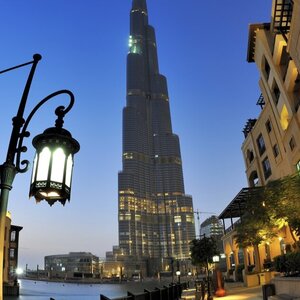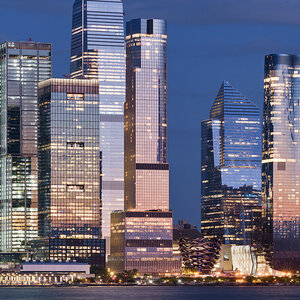The WPJ
THE WORLD PROPERTY JOURNALReal Estate Facts Not Fiction
Commercial Real Estate News

India Rising as Australia, Japan Dominate Commercial Investment Activity in 2015
Commercial News » Sydney Edition | By Michael Gerrity | May 26, 2015 9:33 AM ET
According to Knight Frank's Asia-Pacific Capital Markets May 2015 report, overall commercial real estate investment continued apace in the second half of 2014, with volumes (excluding land sales) hitting US$72 billion - a seven-year high and only marginally below the US$74 billion of H2 2007.
A significant weight of capital continues to be concentrated on Japan and Australia, which together accounted for 42% of all transaction volumes in H2 2014, up from 40% in the same period of 2013. With prime yields in the two most traded markets continuing to compress, there is an increasing appetite for value-add opportunities or secondary assets, as investors move up the risk curve.
Nicholas Holt, Head of Research for Asia Pacific at Knight Frank, says, "In terms of liquidity and financing, the Indian commercial property investment market has been a consistent underperformer. However, hope is on the horizon, not only with the ongoing improving economic fortunes of the world's largest democracy, but also with the framework for Real Estate Investment Trusts (REITs), an investment vehicle that invests in rent-yielding completed real estate properties."
Asia Commercial Investment Highlights:
- Although recovery in the West would lend support, economies in Asia-Pacific continue to face significant headwinds.
- A strengthening US economy coupled with an appreciating Dollar will lift external demand for the region's outputs.
- A weaker Euro could erode the export competitiveness of the region and offset some positive impacts from a more stable Euro zone.
- China's slowdown will continue to weigh on the region, especially Hong Kong and commodity exporters. With the government wary of inflating the property market further with cheap money, there is even speculation that it may devalue the Yuan.
- H2 2014 saw slower rental growth
- Knight Frank's Prime Shopping Centre Index increased by 0.3% in the second half of 2014, the same rate as seen in the year-ago period. Compared to the preceding six months, however, this represents a slowdown in momentum from 1.5% growth.
- Holt adds, "Retail markets across the region continue to be impacted by the rise of ecommerce and shifting consumption patterns. At the same time, challenging trading conditions in many secondary malls are putting some downward pressure on returns."
Sign Up Free | The WPJ Weekly Newsletter
Relevant real estate news.
Actionable market intelligence.
Right to your inbox every week.
Real Estate Listings Showcase
Related News Stories
Commercial Real Estate Headlines
- U.S. Commercial Mortgage Originations Spike 27 Percent in Q2 Over Q1
- Phnom Penh's Commercial Office, Retail Markets Face Slowdowns in 2024
- Global Edge Data Center Market to Hit $300 Billion by 2026
- Commercial Property Transactions in Japan Dive 25 Percent Annually in Q2
- Delinquency Rates for U.S. Commercial Property Loans Downticks in Q2
- Megawarehouse Lease Deals in U.S. Increase in 2024
- Office Tenants' Flight to Quality Buildings Increases in 2024
- Commercial Lending in Japan Upticks 6 Percent Annually in Q1
- AI Driving Significant Global Data Center Growth in 2024
- Total U.S. Commercial Mortgage Debt Rises to $4.7 Trillion in Q1
- U.S. Commercial Mortgage Delinquencies Rise in Early 2024
- Asia Pacific Office Sector to Further Reprice Throughout 2024
- U.S. Retail Foot Traffic to Surpass Pre-Pandemic Levels by 2025
- Commercial Real Estate Lending in U.S. Slowed in First Quarter
- Japan Commercial Property Investment Volume Jumps 7 Percent in Q1
- Asia Pacific Commercial Property Investment Leads the World, Spikes 13 Percent
- Driven by High Rates, U.S. Commercial Lending Imploded 47 Percent in 2023
- After Two Year Slump, Prime Multifamily Metrics Uptick in U.S.
- Commercial Co-Broker Commissions Not Affected by NAR-DOJ Settlement, Yet
- U.S. Office Buildings with Upscale Tenant Amenities Still Enjoy Premium Rents in 2024
- U.S. Commercial, Multifamily Mortgage Delinquency Rates Uptick in Q4
- U.S. Commercial Mortgage Debt Continued to Rise in 2023, Hits $4.7 Trillion
- Nonresidential Construction Spending in the U.S. Falls Sharply in January
- U.S. Multifamily Construction Starts to Decline in 2024
- Commercial Mortgage Lending in U.S. Shows Signs of Stabilization in Late 2023
- Architecture Billings Decline in December as Soft Business Conditions Persist
- Government Sector Claimed Largest Portion of 100 Biggest U.S. Office Leases Signed in 2023
- U.S. Commercial, Multifamily Borrowing Dives 25 Percent Annually in Late 2023
- Record High Multifamily Construction Deliveries Drive Vacancy Rates Higher
- Commercial Property Investment in Japan Implodes 57 Percent Annually in Late 2023
- Green Energy Companies Flocking to New York City Office Space
- Asia Pacific Commercial Property Investment Upticks 3 Percent in Q4
- U.S. Commercial, Multifamily Borrowing to Hit $576 Billion in 2024
- Japan is Top Cross Border Commercial Property Investment Target in 2024
- U.S. Delinquency Rates for Commercial Properties Increased 6 Percent in Q4 of 2023
- Commercial Property Investment in Japan to Weaken in 2024
- Office Landlords Nationwide Increasing Concessions to Lure Tenants in U.S.
- Hong Kong's Commercial Property Market Faces Ongoing Challenges in 2024
- Online Returns in the U.S. Could Total $82 Billion This Holiday Season
- More Pain Expected in 2024 for America's Commercial Property Sector
Reader Poll
Marketplace Links
This website uses cookies to improve user experience. By using our website you consent in accordance with our Cookie Policy. Read More





